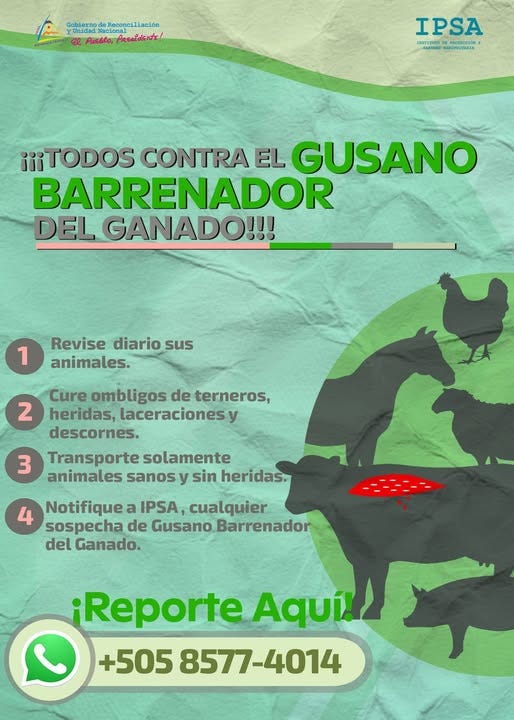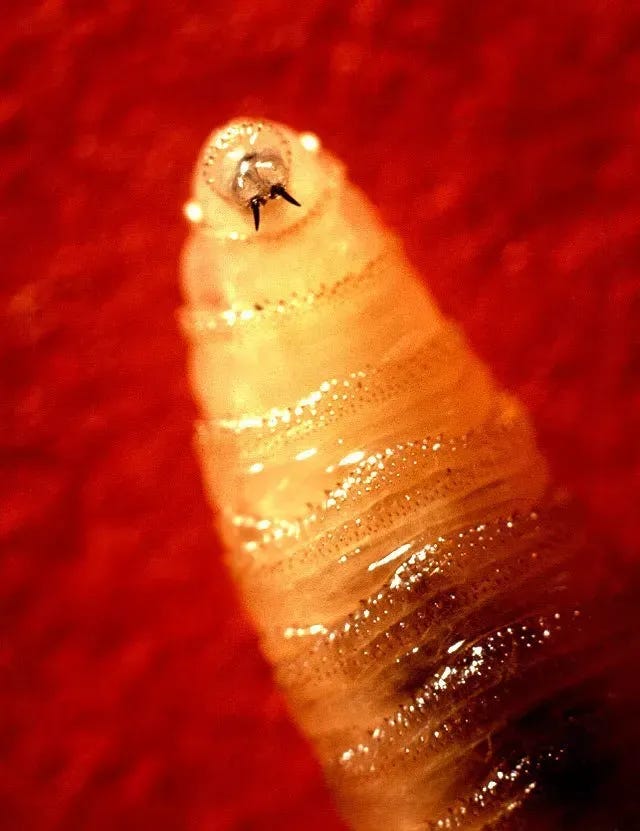The Nicaragua Instituto de Protección y Salud Agropecuaria (IPSA) is reporting at least 30 people have been infested with screwworm, a parasitic infection caused by the larvae (maggots) of the New World screwworm fly, Cochliomyia hominivorax.
According to officials, in addition to the human cases, nearly 12,000 animals have been affected by the screwworm.
Regarding the affected people, officials said that they were working in coordination with the Ministry of Health (MINSA) for the immediate care of these people.
In Nicaragua, cases of screwworm have been identified in Río San Juan, Rivas, Carazo, Masaya, Chontales, Boaco, Managua, Granada, Matagalpa, North and South Caribbean, León, Chinandega, Jinotega, Estelí, Nueva Segovia, and Madriz, where epidemiological surveillance is maintained in the focal area and its surroundings.
In April of last year, IPSA authorities, through a decree, declared a national Animal Health Alert due to the presence of the screwworm in cattle in Nicaragua. Since then, thousands of cases have been detected.
Screwworm is a disease caused by the larva of the fly, which lays its eggs in the skin of mammals, including humans, the larvae hatch and develop under the skin, causing a condition known as cutaneous myiasis.
Symptoms include the presence of a painful lump on the skin that may secrete fluid. As the larva grows, it may be visible under the skin and can often be felt moving. Treatment usually involves surgical removal of the larva, followed by local care to prevent infection.






